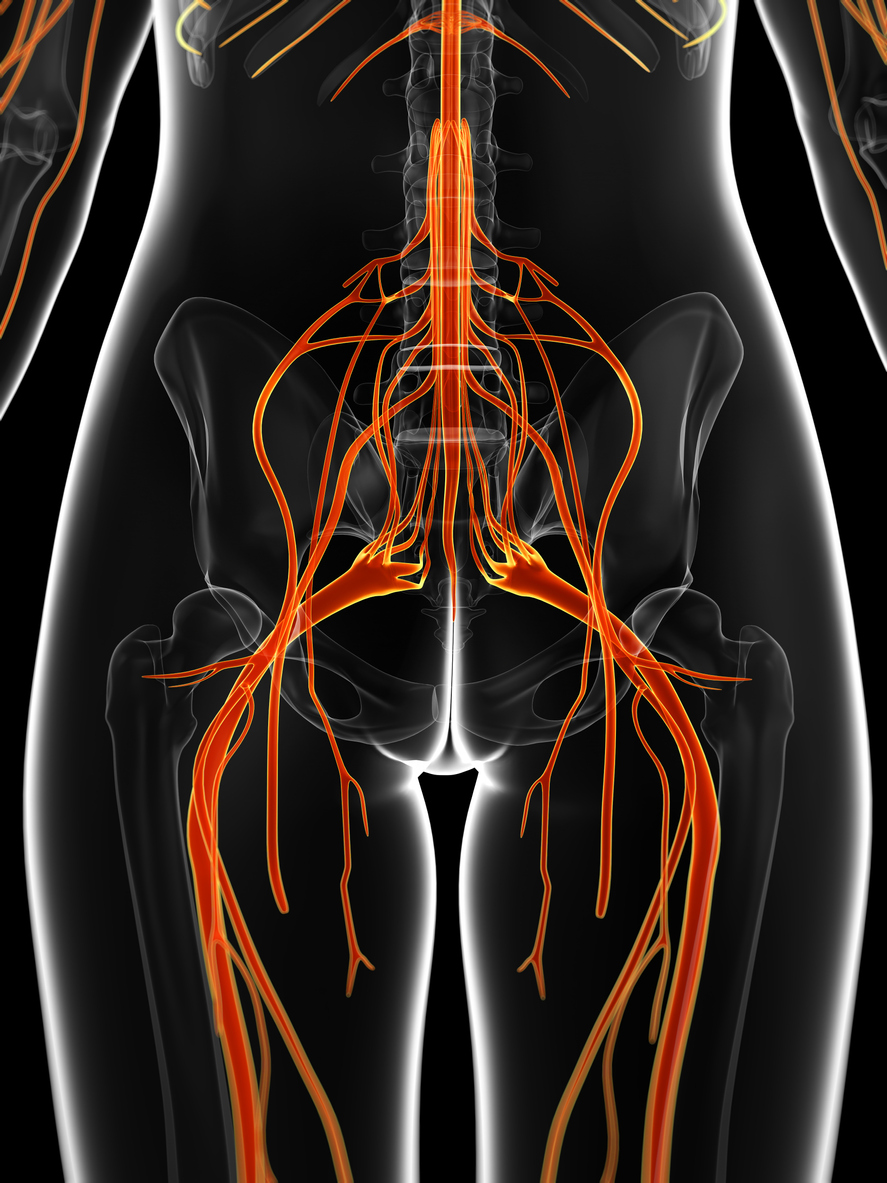Pain
Conventional Medical Treatments for Meralgia Paresthetica

What is meralgia paresthetica?
Meralgia paresthetica, also known as Bernhardt-Roth syndrome, is a condition that involves compression of the lateral femoral cutaneous nerve. The lateral femoral cutaneous nerve provides sensation to the skin along the front and outer-side of the thigh. It is a large nerve that originates at the spinal cord in the lower back and extends through the pelvis and groin to the upper thigh. This nerve only affects sensation and does not impact muscle activity.
Conventional Medical Treatments for Meralgia Paresthetica
Treatment of meralgia paresthetica involves treating the underlying cause. Oftentimes, the symptoms improve on their own in a few months. Conventional medical treatment may include medicine, nerve blocks, radiofrequency nerve ablation, injections, and surgery.
Medication
Certain medications, such as nonsteroidal anti-inflammatory medications (NSAIDs) or topical medication, such as lidocaine or capsaicin, may be recommended as a treatment option. A health care professional may also prescribe gabapentin, phenytoin, pregabalin, duloxetine or carbamazepine to ease symptoms of meralgia paresthetica.
Nerve blocks or radiofrequency nerve ablation
A local anesthetic may be injected to certain nerves to reduce pain. Radiofrequency nerve ablation uses radio waves to heat a small area of nerve tissue and destroy the nerves. This stops pain signals from being sent to the brain.
Injections
A corticosteroid injection may be recommended to reduce swelling, inflammation and pain. Potential side effects may include nerve damage, joint infections, or pain at the injection site.
Surgery
Surgery is rare for meralgia paresthetica and is typically only suggested when all other treatment options have failed. If surgery is necessary, it involves reducing compression on the lateral femoral cutaneous nerve.












